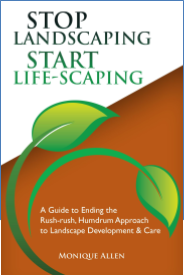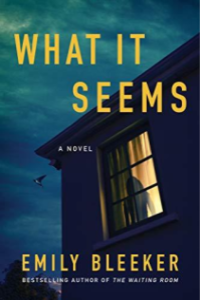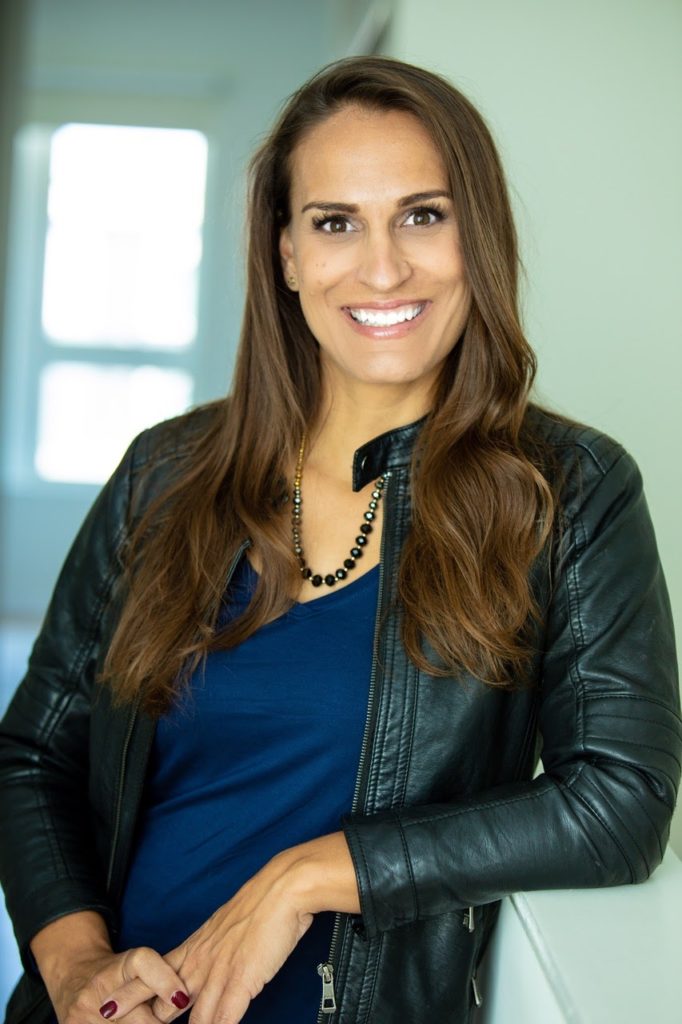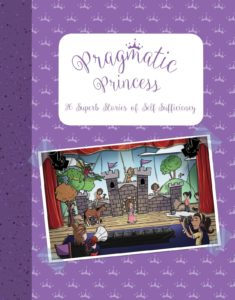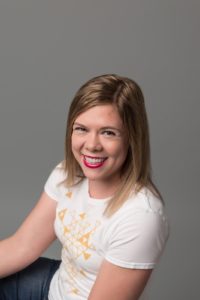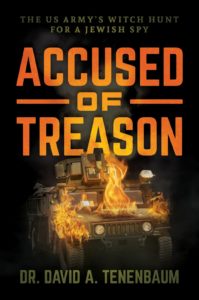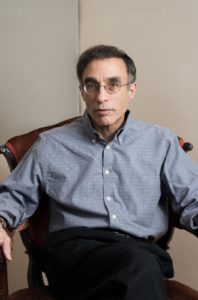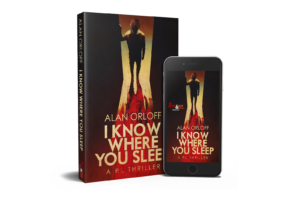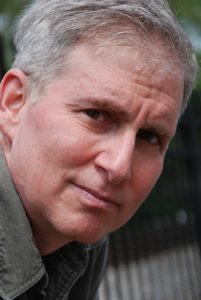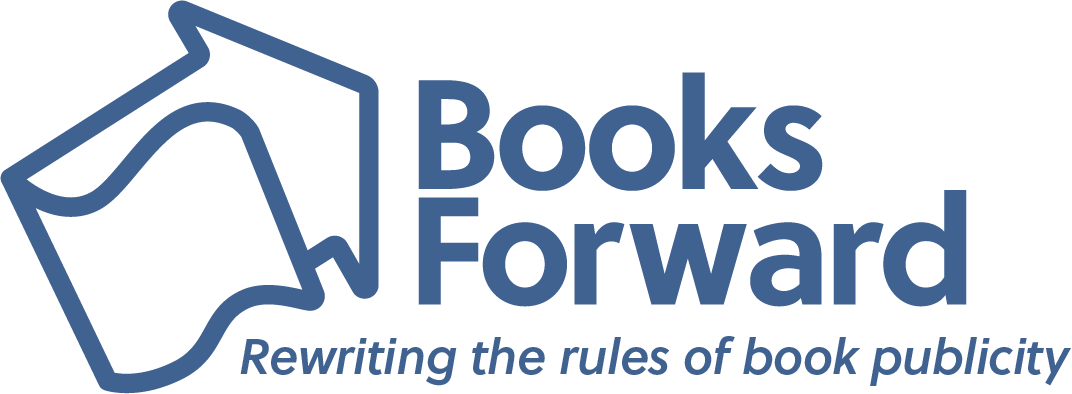As we all adapt to social distancing and quarantine efforts from COVID-19, many of us are spending a lot of time at home. Soon, we’ll learn there’s only so much TV we can binge, card games we can play and anxious newsfeed scrolling we can take — so why not catch up on a good book?
Good reads simultaneously relax and stimulate our brains, entertain us, connect us through shared recommendations and take us to far away places. We’ve curated a list of some of our favorite reads below — whether you’re eager for wellness advice or wanting to take a break from coronavirus news, we’ve got something for everyone.
Be sure to also check out our free Books Forward Helpline (booksforward.com/helpline) for tips on downloading great ebooks and audiobooks, and how to still support your local indie bookstore during this time.
Books about staying healthy physically, mentally and emotionally at home
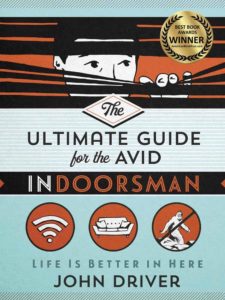
The Ultimate Guide for the Avid Indoorsman: Life is Better in Here by John Driver
Embrace the indoor lifestyle with this hilarious handbook full of tips and tricks to help you thrive at home in self-quarantine. Establish an indoor routine, dress the park by thinking simple and sleek, explore the science of ergonomics behind setting up your indoor space, and be sure to take the accompanying Indooreagram Quiz!
The Clean Body: A Modern History by Peter Ward
How often did our ancestors bathe? How often did they wash their clothes and change them? Why have our hygienic habits changed so dramatically over time? The Clean Body explores one of the most fundamental and pervasive cultural changes in Western history since the 17th century: the personal hygiene revolution. Based on a wealth of sources in English, French, German, and Italian, The Clean Body surveys the great hygienic transformation that took place across Europe and North America over the course of four centuries.
My Creative Space: How to Design Your Home to Stimulate Ideas and Spark Innovation by Donald M. Rattner
According to science, creativity isn’t all in your head. Sometimes it’s in what’s around you — especially when you’re at home. For over 20 years, scientists have been discovering connections between our physical surroundings and the creative mind. Written by a noted architect, My Creative Space is the first book to turn this rich trove of psychological research into practical 48 techniques for shaping a home that will boost your creativity.
Stop Landscaping and Start Life-Scaping: A Guide to Ending the Rush-rush, Humdrum Approach to Landscape Development & Care by Monique Allen
Transform your outdoor space into a powerful place that boosts your imagination, recharges your batteries and uplifts your soul, with this garden expert’s holistic approach to landscaping. The author shows how your landscape is your connection to nature and ultimately the lifeline to inner peace and the well-being of our communities.
#CHILL: Turn Off Your Job and Turn On Your Life by Bryan Robinson
Stop stressing and learn to chill with this mindfulness and meditation guidebook that can help workaholics and others let go of anxiety and achieve and maintain the healthy work/life balance they need. Licensed psychotherapist and professor Bryan Robinson provides a month-by-month guide with meditations that help center and soothe us, allowing us to step back, close our eyes, take a long breath, and focus on the moment. Filled with wise advice, inspiring quotes, and gentle guidance, #Chill gives us the tools we need to quiet our anxiety, break our addiction to work, and bring compassion, calm, confidence, and creativity into our daily existence — and at last have the peaceful, balanced life we all deserve.
A Year of Living Kindly: Choices That Will Change Your Life and the World Around You by Donna Cameron
Being kind when we don’t feel like it, or when all of our buttons are being pushed, is hard. But that’s also when it’s most needed; that’s when it can defuse anger and even violence, when it can restore civility in our personal and virtual interactions. Kindness has the power to profoundly change our relationships with other people and with ourselves. In A Year of Living Kindly — using stories, observation, humor and summaries of expert research — Donna Cameron shares her experience committing to 365 days of practicing kindness. She presents compelling research into the myriad benefits of kindness, including health, wealth, longevity, improved relationships, and personal and business success.
Finding the Wild Inside: Exploring Our Inner Landscape Through the Arts, Dreams and Intuition by Marilyn Hagar
In Finding the Wild Inside, Marilyn Hagar encourages readers to discover that creative place inside us that knows there is more to life than we are currently living―the less rational part of ourselves that she calls our “wild inside,” a place most of us have not been taught to navigate. Hagar shows us how, through playing in the arts, contemplating our nightly dreams, fostering our intuition, and reconnecting to Mother Nature, we can discover our own authentic wild self.
Ambition Addiction: How to Go Slow, Give Thanks, and Discover Joy Within by Benjamin Shalva
Self-described ambition addict Benjamin Shalva (Spiritual Cross-Training) has written an insightful and illuminating book for anyone who wants to control that destructive strain of ambition and live with integrity. He identifies the signs and symptoms of ambition addiction and profiles iconic achievers to help readers identify unhealthy motivations. Then he reveals the five steps to living a fulfilling life of healthy, productive ambition in which grand but elusive fantasies give way to the true happiness of the here and now.
The Gyroscope of Life: Understanding Balances (and Imbalances) in Nature by David Parrish
Many of us recall childhood science classes with little enthusiasm, having felt alienated by seemingly esoteric concepts. Appalachian naturalist David Parrish is here to change that. The 50-year practitioner brings biological studies to the curious nonscientist in an accessible and relevant way, inspiring readers to consider the world around us in a new light. Whether you’re curious about the sustainability of modern agriculture or the accuracy of “The Big Bang Theory” theme song, David Parrish will move you to think like a scientist in his insightful, unconventional — and often humorous — love song to biology.
Inspiring true stories of resilience in times of adversity
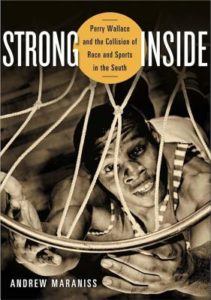
Strong Inside: Perry Wallace and the Collision of Race and Sports in the South by Andrew Maraniss
Based on more than 80 interviews, this fast-paced, richly detailed biography of Perry Wallace, the first African-American basketball player in the SEC, digs deep beneath the surface to reveal a complicated and profound story of sports pioneering. And bonus – there’s a Young Adult version to this New York Times bestseller, so you can read as a family!
The Impatient Dr. Lange: One Man’s Fight to End the Global HIV Epidemic by Dr. Seema Yasmin
Pulitzer-finalist Dr. Seema Yasmin reveals the poignant true story of her mentor, Dr. Joep Lange — a shrewd Dutch HIV doctor and scientist who was working on a cure for the HIV pandemic when he was a passenger on the ill-fated Malaysia Airlines flight MH17.
What a Body Remembers: A Memoir of Sexual Assault and Its Aftermath by Karen Stefano
On a summer night in 1984, 19-year-old UC Berkeley sophomore Karen Thomas leaves her uniformed patrol job and walks home alone in darkness. At the threshold of her apartment a man assaults her at knife point. She manages to escape but is left traumatized. She goes on to become a criminal defense lawyer, defending those accused of crimes as heinous as the one committed against her.
Waking in Havana: A Memoir of AIDS and Healing in Cuba by Elena Schwolsky
Compelled by her anti-war work with returning Vietnam veterans and her passion for social justice, Elena Schwolsky travels to the then-forbidden island of Cuba in 1972 with a brigade of youthful volunteers to help build houses for workers and support the still young Cuban Revolution. It was a decision that would shape her life and ultimately lead her back to Cuba 20 years later.
Shedding Our Stars: The Story of Hans Calmeyer and How He Saved Thousands of Families Like Mine by Laureen Nussbaum
During the German occupation of the Netherlands, 1940-45, German official Hans Calmeyer used his assignment to save at least 3,700 Jews from deportation and death, dwarfing the number saved by Schindler’s famous rescue operation. Laureen Nussbaum―née Hannelore Klein―owes her life to this brave German official, and now she reveals his story as well as her own in this a book about courage in the darkest of times, and the resilience of the human spirit.
When a Toy Dog Became a Wolf and the Moon Broke Curfew: A Memoir by Hendrika de Vries
After seeing her father deported from Nazi-occupied Amsterdam to a POW camp in Germany, and her mother join the Resistance, Hendrika watches as freedoms formerly taken for granted are eroded with escalating brutality by men with swastika armbands who aim to exterminate those they deem “inferior” and those who do not obey. This is a story about the fight for survival―and through these harrowing experiences, Hendrika discovers the woman she wants to become.
Hunting the Caliphate: America’s War on ISIS and the Dawn of the Strike Cell by Dana J. H. Pittard and Wes J. Bryant
In this vivid first-person narrative, a Special Operations joint terminal attack controller and his commanding general give fascinating and detailed accounts of America’s fight against one of the most barbaric insurgencies the world has ever seen.
Escapist books to take your mind off coronavirus
FICTION
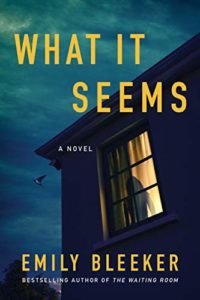
What it Seems by Emily Bleeker
A page-turning novel of suspense about the perfect family, and the perfect lies, by the Wall Street Journal bestselling author of When I’m Gone, Wreckage and The Waiting Room. Adopted by her controlling foster mother, Tara has seen little of the outside world. Her only distraction comes from watching the Feely family’s online videos, and the opportunity arises for her to intern with them. Daring to run away, and defying Mother’s rules, Tara is welcomed into the loving fold, but soon realizes that not everything is as it seems.
The Lucky One by Lori Rader-Day
Twisting and compulsively readable, The Lucky One explores the lies we tell ourselves to feel safe. As a child, Alice was stolen from her yard but against odds her father tracked her down and rescued her. Later in life, she volunteers for a true-crime website, searching for clues to help reunite families with their missing loved ones. When a face appears on Alice’s screen that she recognizes, she’s stunned to realize it’s the same man who kidnapped her decades ago. And the post is deleted as quickly as it appeared, leaving Alice with more questions than answers.
The Perfect Escape by Suzanne Park
Giggle your way through this delightful #ownvoices YA rom-com, as a budding teen romance begins in a zombie-themed escape room. Also thoughtfully exploring diversity and classism in her writing, Suzanne Park’s readers can look forward to a second book release in August – Loathe at First Sight featuring a Korean-American producer tasked with launching a feminist video game while being antagonized by the company’s new MBA intern.
Four Feasts til Darkness series by Christian A. Brown
Strap in for a rich, long fantasy epic ala Game of Thrones in Christian A. Brown’s new series including Feast of Fates, Feast of Dreams, and Feast of Chaos. Morigan lives a quiet life as the handmaiden to a fatherly old sorcerer named Thackery. But when she crosses paths with Caenith, a not wholly mortal man, their meeting sparks long buried magical powers deep within Morigan. Unbidden visions begin to plague her—visions that show a devastating madness descending on one of the Immortal Kings who rules the land.
A Matter of Chance by Julie Maloney
When 8-year-old Vinni Stewart disappears from a Jersey shore town, Maddy, her distraught single mother, begins a desperate search. Maddy’s five-year journey leads her to a bakery in Brooklyn, where she stumbles upon something terrifying. Ultimately, her artist neighbor reconnects Maddy to her passion for painting and guides her to a life transformed through art. A detective sees more than a kidnapping in the plot-thickening twists of chance surrounding Vinni’s disappearance, but his warnings to stay away from the investigation do not deter Maddy.
Scenes from the Heartland: Stories Based on Lithographs by Thomas Hart Benton by Donna Baier Stein
A contemporary writer turns her imagination loose inside the images of an iconic artist of the past. Here are nine tales that bring to vivid life the early decades of the 20th century as witnessed by one of America’s most well-known painters, Thomas Hart Benton. Though his lithographs depict the past, the real-life people he portrayed face issues that are front and center today: corruption, women’s rights, racial inequality and more.
Blackbeard: The Birth of America by Samuel Marquis
Here is the true story of Edward Thache — former British Navy seaman and notorious privateer-turned- pirate, who lorded over the Atlantic seaboard and Caribbean during the Golden Age of Piracy. Based on reliable historical records and the latest research, this adventure tale illuminates the true man behind the myth and his doggedly determined pursuer, revealing a cat-and-mouse game and important historical figure lost to us in a “fog of legend, myth and propaganda” for 300 years.
As Night Falls by Jenny Milchman
From the acclaimed author of Ruin Falls and Cover of Snow comes a breathless new novel of psychological suspense about a dark, twisted turn of events that could shatter a family — a read perfect for fans of Gillian Flynn, Chris Bohjalian and Nancy Pickard.
NONFICTION
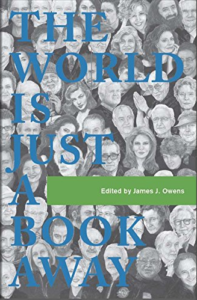
The World is Just a Book Away by James J. Owens (Editor)
At first glance, the 60 people in this anthology may not seem to have much in common — but they all share their personal love of books. James Owens provides readers with unique insight into the personal stories of five Nobel Peace Prize laureates, actors, royalty, world leaders, scientists, humanitarians, and other prominent people, including: His Holiness the Dalai Lama, Liam Neeson, Natasha Richardson, Senator Edward M. Kennedy, Yo-Yo Ma, Jude Law, Miep Gies, Jane Goodall, Martin Scorsese, Archbishop Emeritus Desmond Tutu, Buzz Aldrin, and many more.
The Las Vegas Madam: The Escorts, the Clients, the Truth by Jami Rodman
When a scandalous news story splashed across mainstream media about an elite escort agency in Las Vegas, people were shocked to learn there was a tiny mastermind behind the company: a small town girl from Oregon named Jami Rodman who went by the pseudonym Haley Heston. Meet the secret society of high-end escorts and the men who hire them in Rodman’s delicious, shocking tell-all memoir about her career as a Las Vegas madam.
Veronica’s Grave: A Daughter’s Memoir by Barbara Donsky
Discover the true story of a young woman who must fight for her independence and her dreams after discovering her family’s shocking secret: They covered up her mother’s death.
She Rode a Harley: A Memoir of Love and Motorcycles by Mary Jane Black
A schoolteacher escapes an abusive marriage and finds love on a blind date. Mary Jane’s new man, sure that riding a Harley will restore her confidence, ends up following the white lines with her through 15 years of marriage, an uncertain diagnosis and a poignant, unforgettable story of personal transformation.
Threads Around the World: From Arabian Weaving to Batik in Zimbabwe by Deb Brandon
Take a voyage through these pages and see how today’s artisans continue to create traditional fiber arts with age-old methods. Blending well-researched information, engaging style and inspiration, the pages explore espadrilles, flatwoven rugs, mittens, voudou flags, mirror embroidery and the histories they all hold. This open-eyed approach will appeal to textile devotees, from the casually curious to professional artists, and to people who are interested in heritage crafts and diverse cultures.
Socially-relevant books to help you stay engaged and learning
FICTION
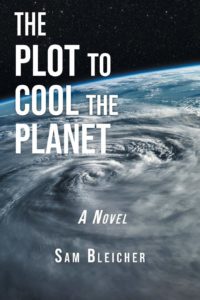
The Plot to Cool the Planet by Sam Bleicher
An outspoken climate scientist is murdered as the world’s weather patterns descend into chaos. Frustrated by the global paralysis, three small-island diplomats secretly launch a rogue venture to cool the planet — and their project uncovers surreptitious interventions and perilous political, diplomatic and military confrontations.
The Reincarnationist Papers by D. Eric Maikranz
Soon to be a major motion picture starring Mark Wahlberg, the book offers a tantalizing glimpse into a secret society of people who possess total recall of their past lives. Evan Michaels struggles with being different, with having the complete memories of two other people who lived sequentially before him – until he meets Poppy, a member of the secretive Cognomina.
Dark Matters by Michael Dow
Dark Matters is set in a not-too-distant future of extreme income inequality, where a select few of the über-elite have the resources and cutting-edge technologies to choose what’s best for the rest of humanity. Are they committed to saving a world gone wrong? Or simply bent on perpetuating their new status quo?
Clouds and Earth by Sayde Scarlett
The Long War changed everything. For Lt. First Class Sandy Attiyeh, the peace she helped create seems to be working for everyone but her. She is willing prey for Lyndon Hamilton, CEO of Hamilton InfoSec, who needs someone to engage in a little corporate espionage. But when Sandy’s face starts to show up on activists’ pamphlets, and rumors begin to circulate regarding her alleged war crimes, any hopes she had of a future in the civilian world begin to unravel. Unable to escape Hamilton’s twisted ambitions, Sandy, caught between her old comrades and her new employer, must find a way to save the peace she sacrificed everything for.
NONFICTION
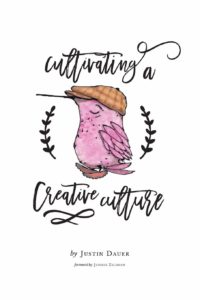
Cultivating a Creative Culture by Justin Dauer
We create human-centered interactions and experiences in our field. Empathetic purpose drives our every decision. Mobile First? In reality, it’s humans first. This same mentality, turned inward, forms the cornerstone of something amazing: a creative culture. The principles discussed in this book derive from the perspectives and skillsets we already use daily: empathy, objectivity and, yes, ample creativity.
The DNA of Democracy by Richard C. Lyons
An American poet writes a compilation of historical vignettes, discerning the future of our democracy by rediscovering the combative, instructive, fascinating past of tyranny and democracy. Just as DNA is interwoven in every aspect of the human body, tyranny and democracy have their historically distinctive DNA that have shaped our democracy today. Lyons traces democracy from its historical roots to the modern day, constructing a blueprint of what defines tyranny or democratic government.
Broken Bargain: Bankers, Bailouts, and the Struggle to Tame Wall Street by Kathleen Day
This engaging history documents the country’s financial crises, focusing on those of the 1920s, the 1980s, and the 2000s, and reveals how the two more recent crises arose from the neglect of this fundamental bargain — and how taxpayers have been left with the bill.
A Manager’s Guide to Unleashing the Intrapreneur by Debbie Wooldridge
Millennials will dedicate futures to companies that stake their confidence in and allocate resources to them. This book helps managers establish and promote intrapreneurship in their organization to help them generate new business growth, support and sustain innovation, as well as accelerate and manage change as the workplace transforms to adapt to address the needs and desires of millennial employees.
Wounds of War: How the VA Delivers Health, Healing, and Hope to the Nation’s Veterans (The Culture and Politics of Health Care Work) by Suzanne Gordon
U.S. military conflicts abroad have left nine million Americans dependent on the Veterans Health Administration for medical care — but the VHA has come under fire from critics in the White House, on Capitol Hill and in the nation’s media. In Wounds of War, Suzanne Gordon draws on five years of observational research to describe how the VHA does a better job than private sector institutions offering primary and geriatric care, mental health and home care services, and support for patients nearing the end of life.
Global Sustainability: 21 Leading Ceos Show How to Do Well by Doing Good by Mark Lefko
Smart business leaders care about sustainability. It’s not just good PR — it’s good business. And a growing number of leading CEOs are embracing it. Mark Lefko shares profound insights gleaned from his one-on-one interviews with business leaders of all stripes, from the CEOs of Global Multinationals to Fortune 50 giants to visionaries leading plucky start-ups.
America Deconstructed by Chaithanya Sohan
“There are some people who are coming to take me away.” Naseer was 9 years old when he escaped the Taliban and fled Afghanistan with his mom and siblings. His story chronicles the resilience of a young boy as he traveled from Afghanistan to America in his quest for the American dream.
Books to keep the kids entertained and that are fun for the whole family
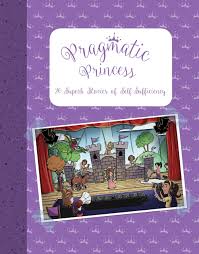
Pragmatic Princess by Rachel Kowert
Inspire young minds to build their own castles and change the damsel in distress narrative to one of self-reliance (with the power of science behind it). The book offers a diverse compilation of short stories for children age 3-8+, by a research psychologist who creates fun and entertaining stories that also maximize learning opportunities.
The Field and Catalyst by Tracy Richardson
There is more to this world than meets the eye in this environmentally-themed sci-fi YA series, with The Field introducing readers to the possibility of access to an endless supply of energy, and Catalyst’s focus on Marcie, who has an intuition that extends beyond normalcy.
Urban Playground: What Kids Say About Living in San Francisco by Katie Burke
In Urban Playground, Katie Burke interviews 50 children, ages 5 to 9, who live in San Francisco. In each conversation, she explores one of 10 different themes — family, school, pets, vacation, work, heroes, holidays, favorite foods, talents, and sports — followed by insights on the topic. She rounds out each segment with five questions for adults and kids to discuss after they’ve read it together, encouraging open, honest dialogue about young readers’ thoughts on the subject matter at hand.
Games of Deception: The True Story of the First U.S. Olympic Basketball Team at the 1936 Olympics in Hitler’s Germany by Andrew Maraniss
From the New York Times bestselling author of Strong Inside comes the remarkable true story of the birth of Olympic basketball at the 1936 Summer Games in Hitler’s Germany — perfect for fans of The Boys in the Boat and Unbroken.
The LEGO Animation Book: Make Your Own LEGO Movies! by David Pagano and David Pickett
The LEGO Animation Book will show you how to bring your models to life with stop-motion animation — no experience required! Follow step-by-step instructions to make your first animation, and then explore the entire filmmaking process, from storyboards to post-production.
Dr. Brainchild & Radar: A Popcorn Discovery by Cole Williams
Join the fun as Dr. Brainchild and Radar discover how a little bit of creativity, some wacky inventions, and a whole lotta science can transform the ordinary into something EXTRA tasty! Science is for everyone, so come along and enjoy the ride!
An Ordinary Day: Kids with Rare Genetic Conditions by Karen Haberberg
An Ordinary Day is a documentation of the personal lives of courageous kids who have rare genetic conditions and their families who love and support them at all costs. Displaying unforgettable photographs set against intimate conversations, the book documents the lives of 27 children living with rare genetic conditions.
And check out our tips for book clubs going virtual if you’d like to discuss with your book club buddies and bring an author in as well.
A former award-winning journalist with national exposure, Marissa now oversees the day-to-day operation of the Books Forward author branding and book marketing firm, along with our indie publishing support sister company Books Fluent.
Born and bred in Louisiana, currently living in New Orleans, she has lived and developed a strong base for our company and authors in Chicago and Nashville. Her journalism work has appeared in USA Today, National Geographic and other major publications. She is now interviewed by media on best practices for book marketing.


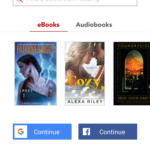
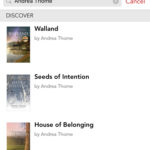
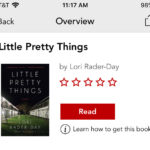
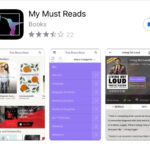

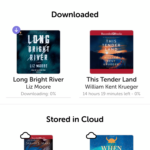








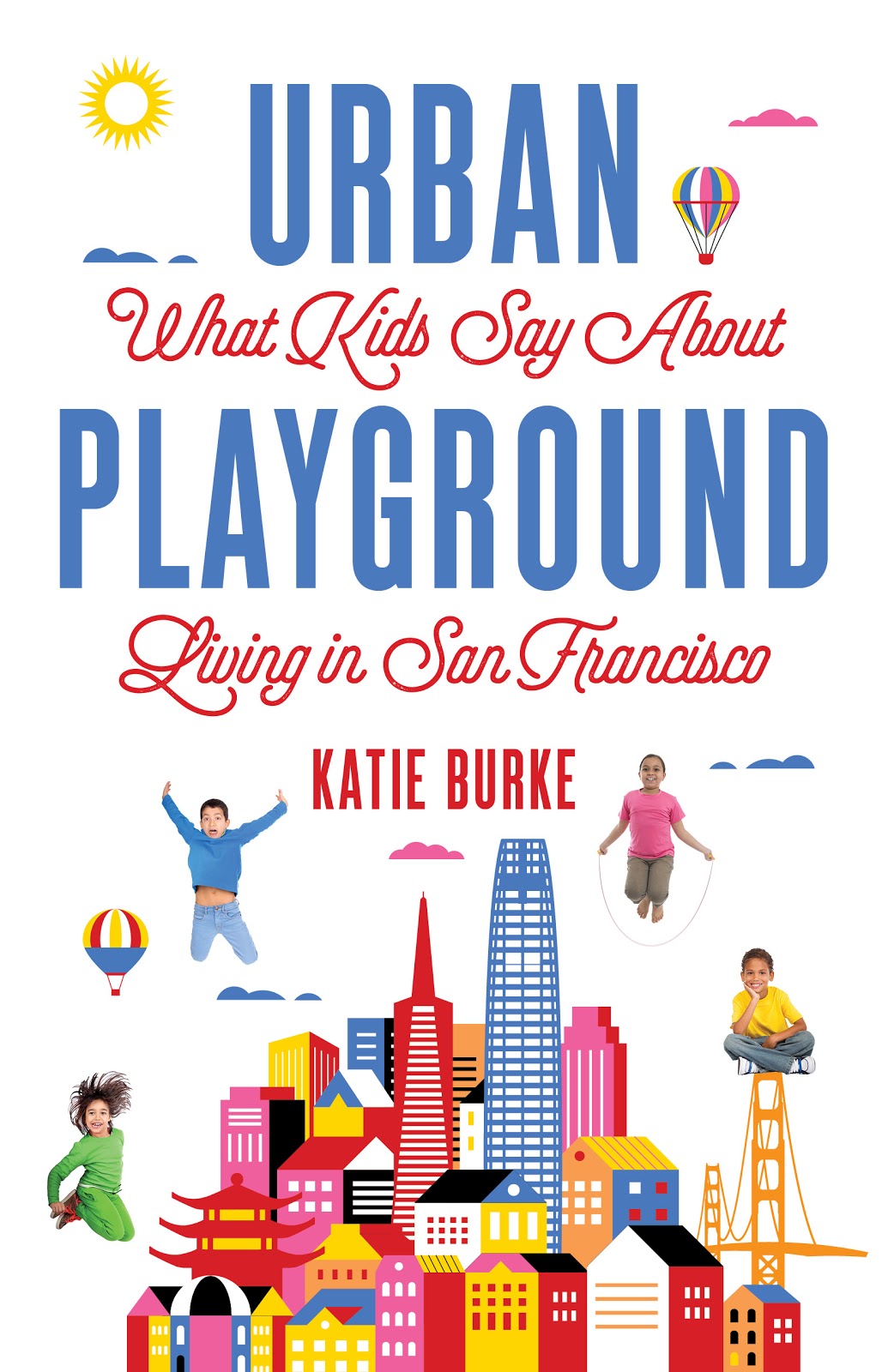
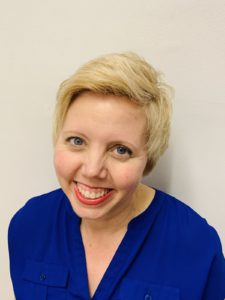 Katie Burke is the author of Urban Playground (SparkPress, 2020), a book featuring San Francisco kids ages five to nine. She writes Noe Kids, a monthly column for The Noe Valley Voice, featuring kids ages four to twelve who live in Noe Valley. Katie has taught creative writing to children and adults in Kenya, South Africa, and San Francisco. She travels annually to New Orleans, and her writing expresses her appreciation for San Francisco and New Orleans’ eccentric characters. Also a family law attorney, Katie writes quarterly judicial and attorney profiles for San Francisco Attorney Magazine. Her other publications include HarperCollins, the L.A. Times, KQED Perspectives, and SoMa Literary Review.
Katie Burke is the author of Urban Playground (SparkPress, 2020), a book featuring San Francisco kids ages five to nine. She writes Noe Kids, a monthly column for The Noe Valley Voice, featuring kids ages four to twelve who live in Noe Valley. Katie has taught creative writing to children and adults in Kenya, South Africa, and San Francisco. She travels annually to New Orleans, and her writing expresses her appreciation for San Francisco and New Orleans’ eccentric characters. Also a family law attorney, Katie writes quarterly judicial and attorney profiles for San Francisco Attorney Magazine. Her other publications include HarperCollins, the L.A. Times, KQED Perspectives, and SoMa Literary Review.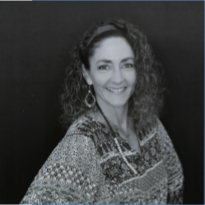 MONIQUE ALLEN is the Founder & Creative Director of The Garden Continuum, an award-winning landscape design/build and fine gardening company. She has spent 35 years as a gardener, designer, contractor, business owner, and employer. She is a master creator, professional employer, and skillful industry advocate. Her impressive project development and care background allow her to choose the clients she works for and the employees she hires while maintaining her staunch commitment to our environment. In addition to 35 years in the business, Monique is also an accomplished business coach, industry blogger, and has just completed her first full-length book on her signature method of Life-Scaping. For more information visit Monique Allen at thegardencontinuum.com.
MONIQUE ALLEN is the Founder & Creative Director of The Garden Continuum, an award-winning landscape design/build and fine gardening company. She has spent 35 years as a gardener, designer, contractor, business owner, and employer. She is a master creator, professional employer, and skillful industry advocate. Her impressive project development and care background allow her to choose the clients she works for and the employees she hires while maintaining her staunch commitment to our environment. In addition to 35 years in the business, Monique is also an accomplished business coach, industry blogger, and has just completed her first full-length book on her signature method of Life-Scaping. For more information visit Monique Allen at thegardencontinuum.com.